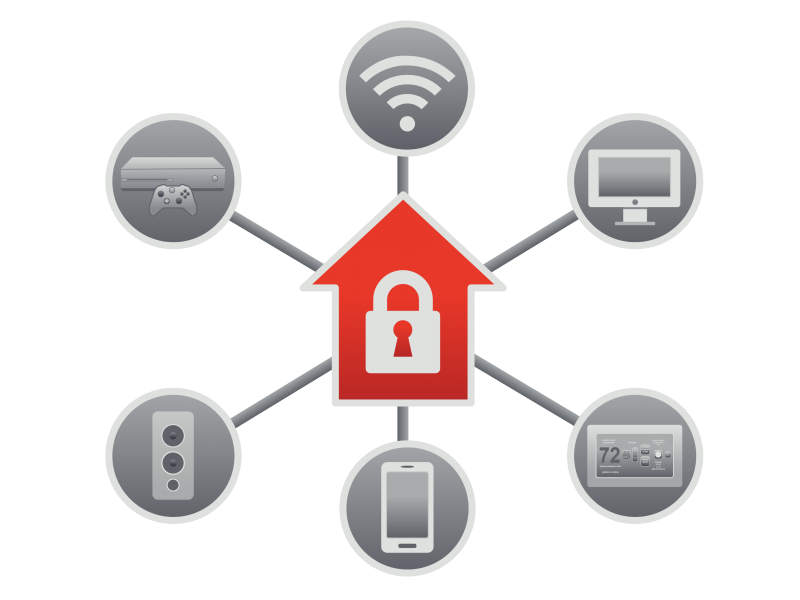
Interested? Contact Us
Several years ago, home networks were relatively simple. They were usually nothing more than a wireless access point and computer or two used for surfing the Internet, online shopping, or gaming. However, home networks have become increasingly complex. We now connect far more devices to these networks and use them for more than just web browsing or consuming media. In this newsletter, we cover how you can create a secure network at home for you and your family.

Almost every home network starts with a wireless network (sometimes called a Wi-Fi network). This is what enables you to wirelessly connect any of your devices to the Internet, from laptops and tablets to gaming consoles and televisions. Most home wireless networks are controlled by your Internet router, which is the device your Internet service provider installed in your house to connect you to the Internet. However, in some cases, your wireless network may be controlled by a separate system called a wireless access point, which connects to your Internet router. Regardless which one your wireless network uses, they both work the same way: by broadcasting wireless signals. The different devices in your house connect to your wireless network via these signals. From there, these devices can then connect to the Internet, as well as any other devices on your home network. This means securing your wireless network is a key part of protecting your home. We recommend the following steps to secure it:
Not sure how to do these steps? Ask your Internet service provider, check the documentation that came with your Internet router or wireless access point, or refer to their respective websites.
The next step is knowing what is connected to your home network and making sure all of those devices are secure. This used to be simple, when there were only a few devices connected. However, in today’s “always connected” world, almost anything can connect to your home network, including TVs, gaming consoles, baby monitors, speakers, your thermostat, and even your car. One simple way to discover what is on your home network is to use a simple network scanner, such as Fing. These apps, which you can install on your computer or mobile device, scan your wireless network and report every device connected to it. Once you have identified all of the devices on your home network, you need to ensure that each of them is secure. The best way to do this is to ensure that they are always running the latest version of their operating system/firmware. Whenever possible, enable automatic updating on them. If any of your devices require a password, always use a unique, strong password. Finally, be sure to visit your Internet service provider’s website, as they may provide free tools to help you secure your home network.
When you subscribe to the blog, we will send you an e-mail when there are new updates on the site so you wouldn't miss them.